By: Michael Reoch, RMT
The online medical dictionary defines Osteoarthritis (OA) or degenerative joint disease (DJD), as a progressive disorder of the joints caused by gradual loss of cartilage and resulting in the development of bony spurs and cysts at the margins of the joints. The name osteoarthritis comes from three Greek words meaning bone, joint, and inflammation(1)
The common perception is that OA is caused by wear and tear of the cartilage in the joint. Eventually this cartilage is worn down and we get a “bone on bone” situation that we are told is very painful (2). Now, there are new ideas emerging on what helps to cause OA and what its relationship is to painful experiences (3).
Instead of looking at OA as your cause of chronic pain, it may be that it is the chronic pain that comes first(4)(3). Lets say you get a RSI (repetitive strain injury) from doing a task without rest, such as using a mouse too often (5)(6). This injury will cause long-term inflammation chemicals such as a group called cytokines to hang out in the area where pain is felt. Over time these inflammation chemicals may cause the tissues in the area to degenerate or break down(7)(8). This is first felt as achiness accompanied with stiffness in movement, usually after waking up in the morning(2). Over time the OA has a central nervous system component(3). What that means is the brain and spinal chord play a major role in the pain you feel. There is an increase in cytokines in the spinal chord, which start to inhibit our natural pain dampening ability(7)(9). Also, some brain regions may have glitches in processing the signals between it and the painful joint(10). Studies show people with OA are more likely to feel pain with less provocation not just in the involved joint(s) but in areas away from the joint(s)(11)(3). There are also studies coming out that are showing that joint surgery for knee arthritis is no better than placebo surgery(12)!
The take-home message is that joint damage is a poor indicator of how much pain you actually feel.
If you feel pain in an area from doing repetitive tasks you should make an effort to permanently decrease that pain: Ask your RMT for help. If you already have bony changes from OA seeing a RMT should be part of your pain management program. This program should involve tweaks to make your activities easier, exercises and massage therapy, as well as any medications your doctor may prescribe. To better understand this new way of viewing OA, you can watch this video or this interesting one that uses mirrors and video tricks to decrease OA pain!
Bibliography:
1. osteoarthritis - definition of osteoarthritis in the Medical dictionary - by the Free Online Medical Dictionary, Thesaurus and Encyclopedia. [Internet]. [cited 2014 Mar 4]. Available from: http://medical-dictionary.thefreedictionary.com/osteoarthritis
2. Osteoarthritis Symptoms and Causes | Information about Osteoarthritis Diagnosis [Internet]. [cited 2014 Mar 4]. Available from: http://www.arthritis.com/osteoarthritis_symptoms
3. Lee AS, Ellman MB, Yan D, Kroin JS, Cole BJ, van Wijnen AJ, et al. A current review of molecular mechanisms regarding osteoarthritis and pain. Gene [Internet]. 2013 Sep 25 [cited 2014 Jan 21];527(2):440–7. Available from: http://www.ncbi.nlm.nih.gov/pubmed/23830938
4. Brandt KD, Radin EL, Dieppe PA, van de Putte L. Yet more evidence that osteoarthritis is not a cartilage disease. Ann Rheum Dis [Internet]. 2006 Oct 1 [cited 2014 Jan 21];65(10):1261–4. Available from: http://ard.bmj.com/content/65/10/1261.full
5. Van Tulder M, Malmivaara A, Koes B. Repetitive strain injury. Lancet [Internet]. 2007 May 26 [cited 2014 Mar 4];369(9575):1815–22. Available from: http://www.ncbi.nlm.nih.gov/pubmed/17531890
6. Ratzlaff CR, Gillies JH, Koehoorn MW. Work-related repetitive strain injury and leisure-time physical activity. Arthritis Rheum [Internet]. 2007 Apr 15 [cited 2014 Feb 27];57(3):495–500. Available from: http://www.ncbi.nlm.nih.gov/pubmed/17394178
7. Fernandes JC, Martel-Pelletier J, Pelletier J-P. The role of cytokines in osteoarthritis pathophysiology. Biorheology [Internet]. 2002 Jan [cited 2014 Feb 22];39(1-2):237–46. Available from: http://www.ncbi.nlm.nih.gov/pubmed/12082286
8. Al-Shatti T, Barr AE, Safadi FF, Amin M, Barbe MF. Increase in inflammatory cytokines in median nerves in a rat model of repetitive motion injury. J Neuroimmunol [Internet]. 2005 Oct [cited 2014 Mar 4];167(1-2):13–22. Available from: http://www.sciencedirect.com/science/article/pii/S0165572805002365
9. Elliott MB, Barr AE, Kietrys DM, Al-Shatti T, Amin M, Barbe MF. Peripheral neuritis and increased spinal cord neurochemicals are induced in a model of repetitive motion injury with low force and repetition exposure. Brain Res [Internet]. 2008;1218:103–13. Available from: http://www.pubmedcentral.nih.gov/articlerender.fcgi?artid=2553006&tool=pmcentrez&rendertype=abstract
10. Nijs J, Van Houdenhove B. From acute musculoskeletal pain to chronic widespread pain and fibromyalgia: application of pain neurophysiology in manual therapy practice. Man Ther [Internet]. 2009 Feb [cited 2012 Aug 3];14(1):3–12. Available from: http://www.ncbi.nlm.nih.gov/pubmed/18511329
11. <span> </span>Full Text: Recent Approaches to Understanding Osteoarthritis Pain [Internet]. [cited 2014 Mar 4]. Available from: https://jrheum.com/subscribers/04/70/54.html
12. Moseley JB, Wray NP, Kuykendall D, Willis K, Landon G. Arthroscopic Treatment of Osteoarthritis of the Knee: A Prospective, Randomized, Placebo-Controlled Trial: Results of a Pilot Study. Am J Sports Med [Internet]. 1996 Jan 1 [cited 2014 Mar 4];24(1):28–34. Available from: http://ajs.sagepub.com/content/24/1/28.short










